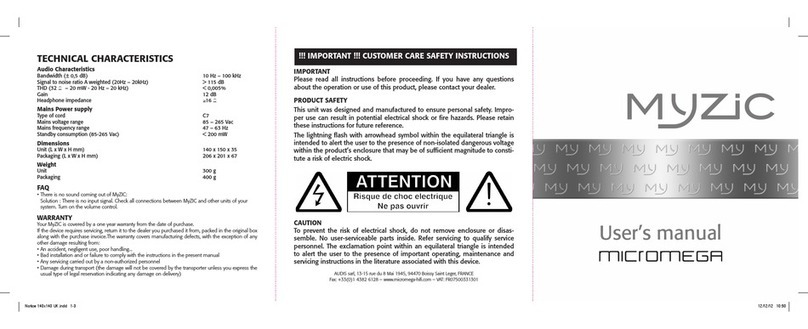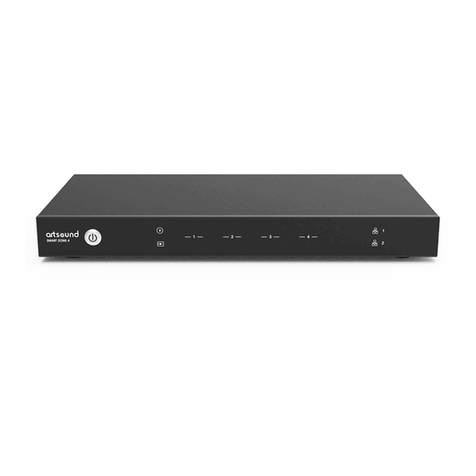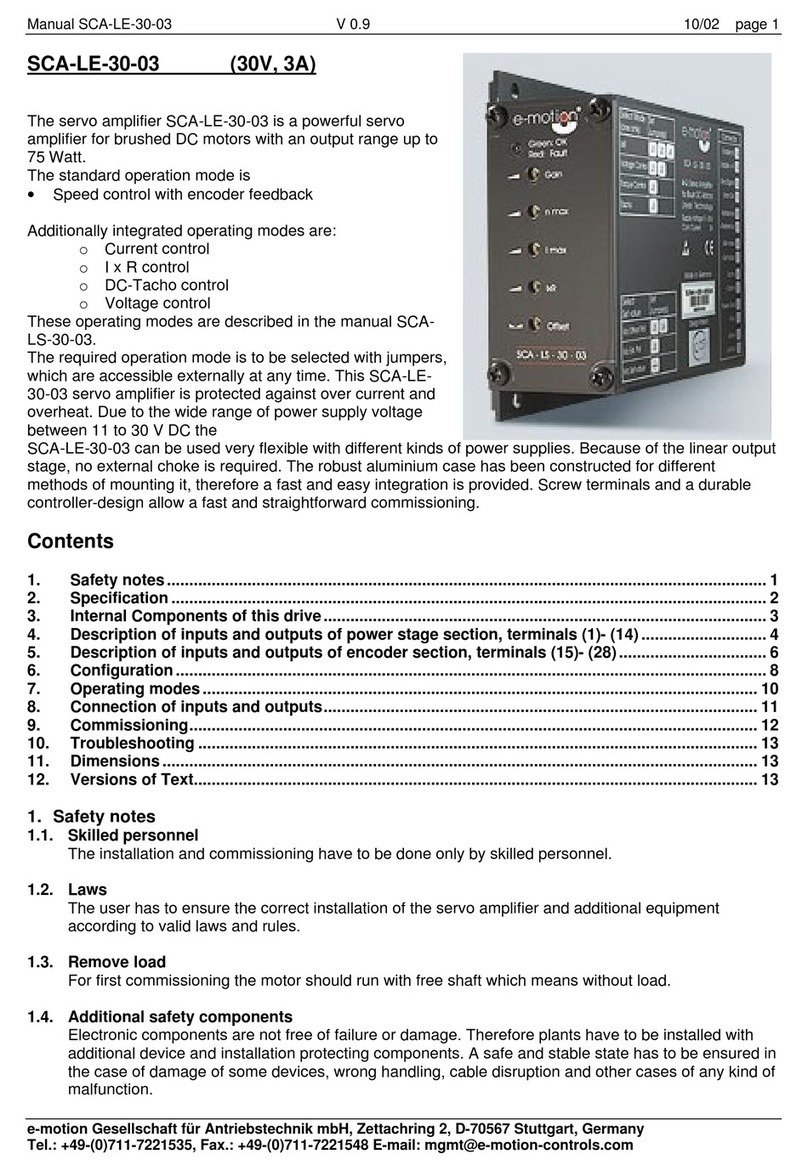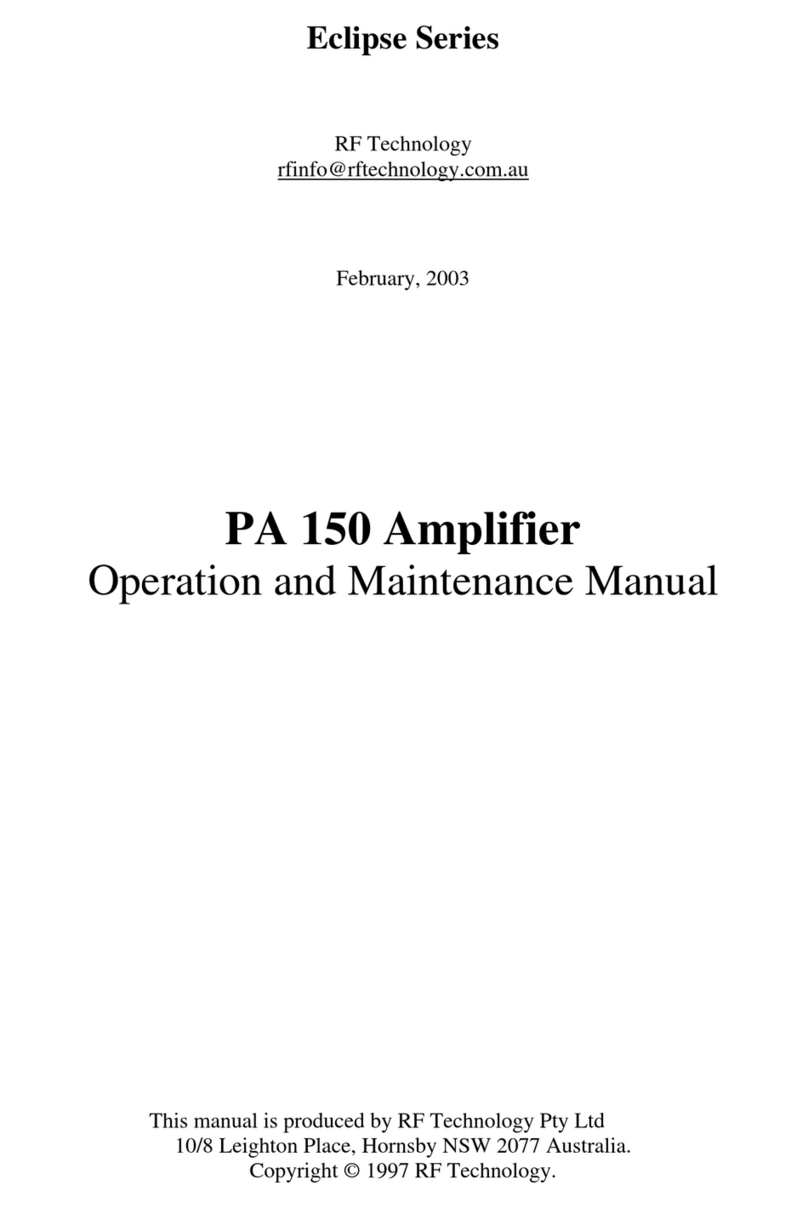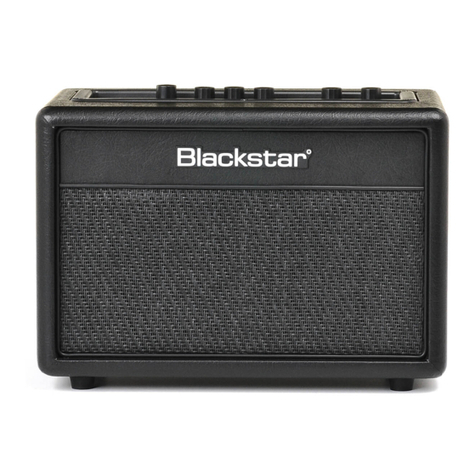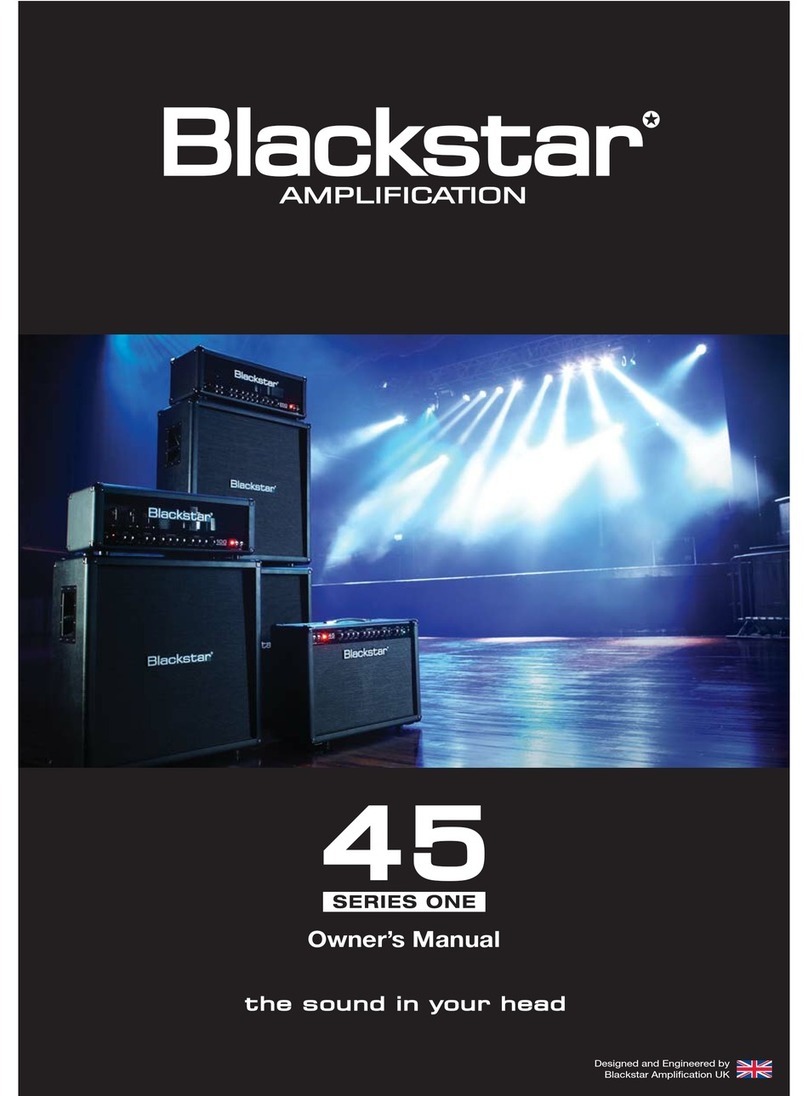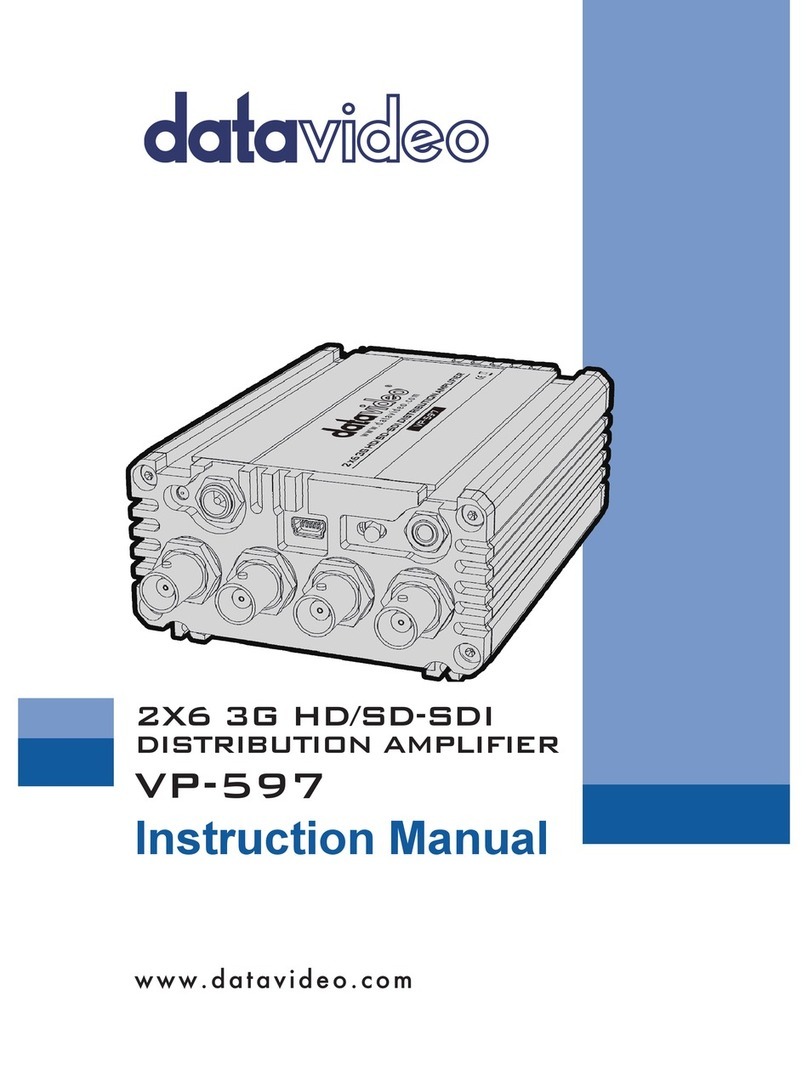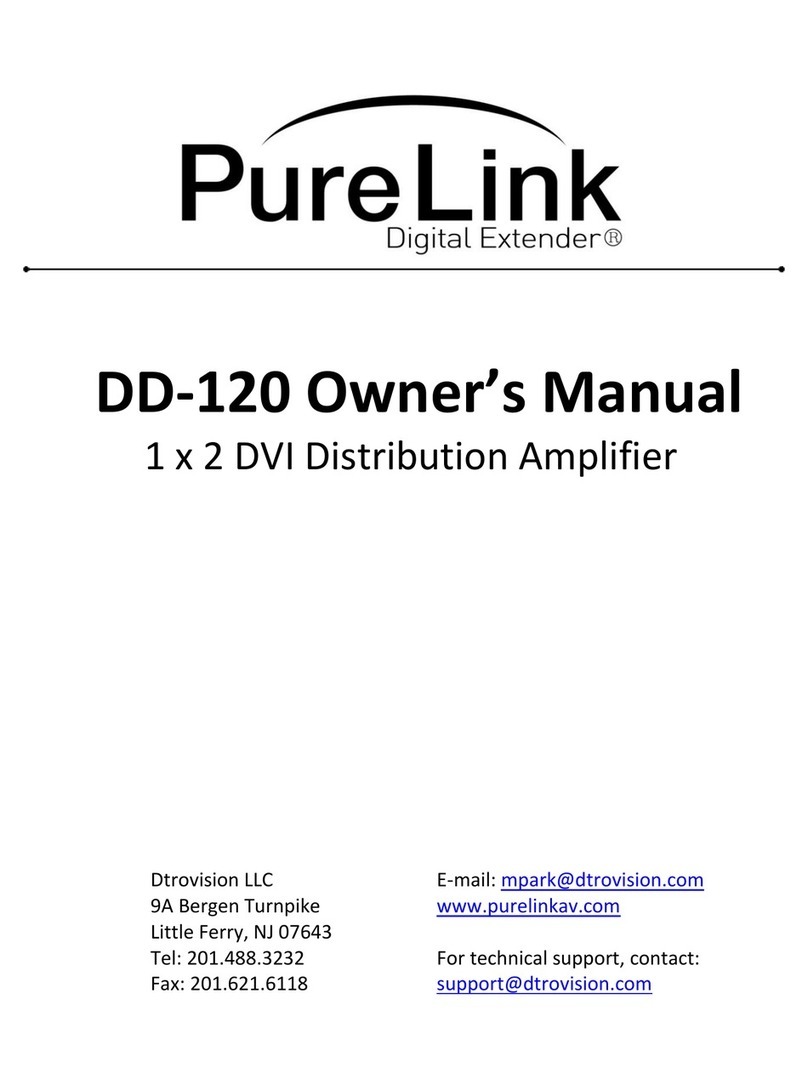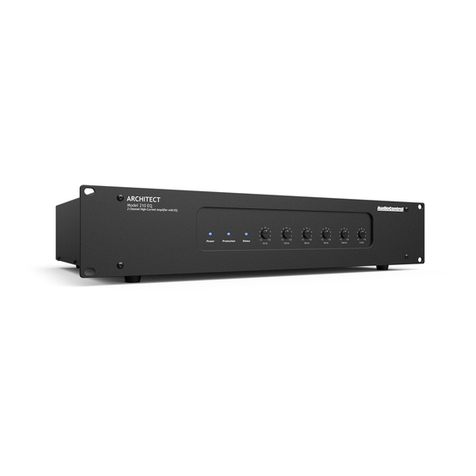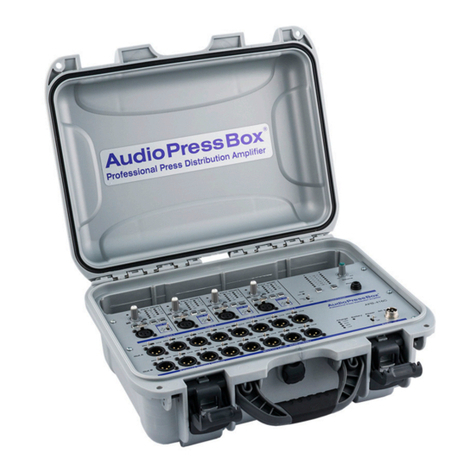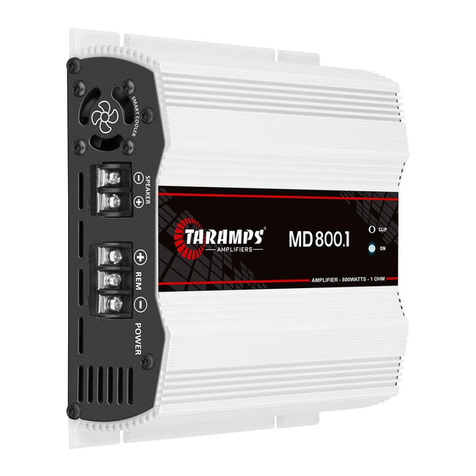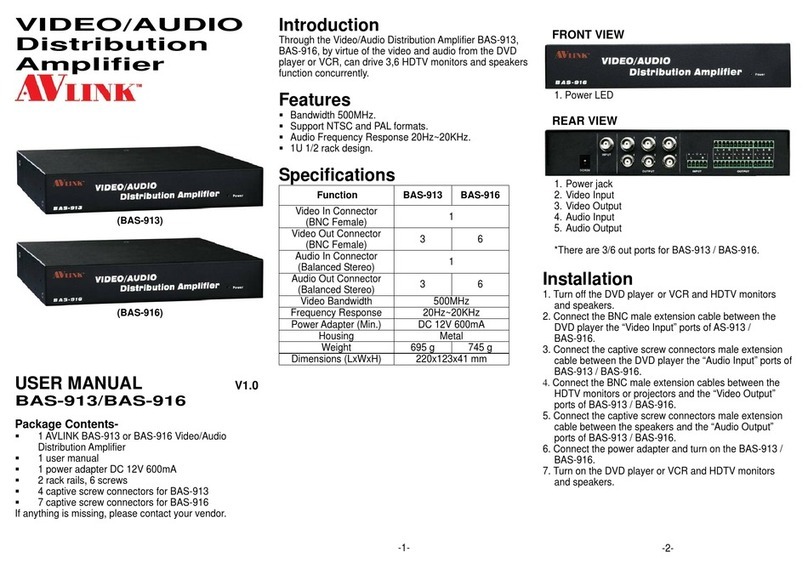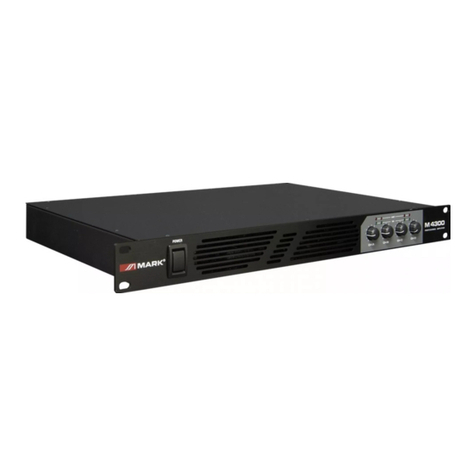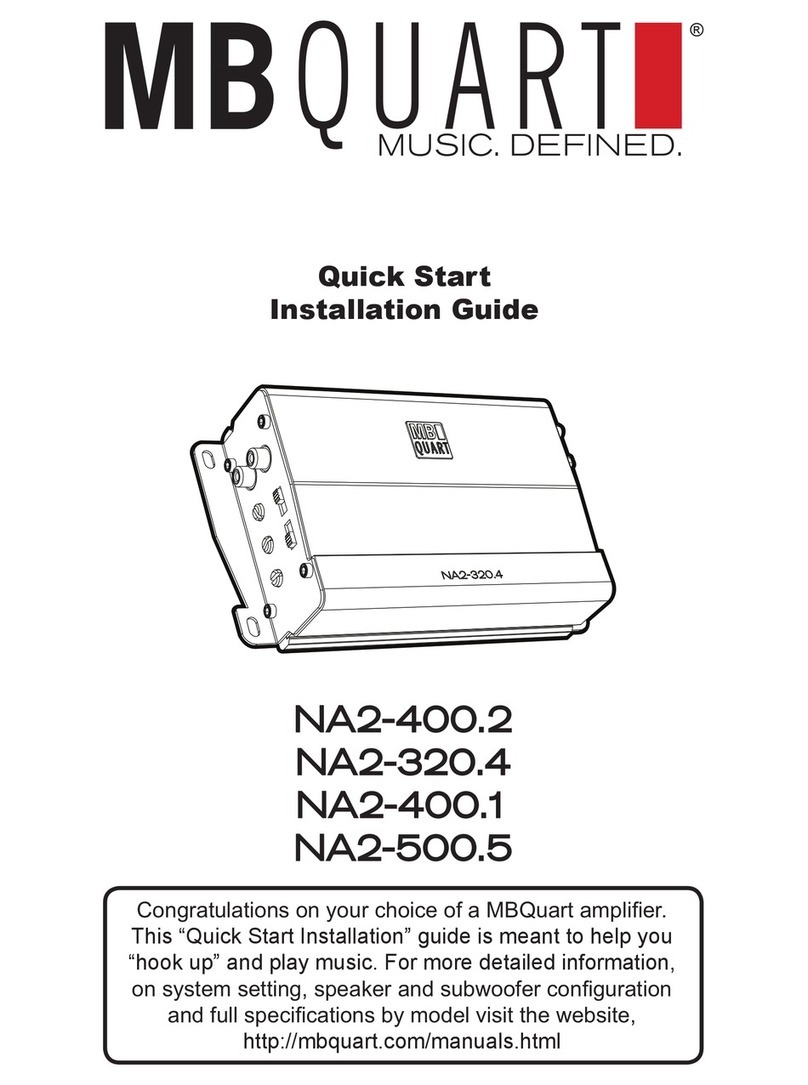Ehrhorn Technological Operations ALPHA 76A User manual

OPERATING AND TECHNICAL MANUAL
HIGH FREQUENCY LINEAR POWER AMPLIFIERS
ALPHA 76A, 76PA, and 76CA
[0 E H R H O R N T E C H N O L O G IC A L O P E R A T IO N S, IN C .
CAÑON CITY, COLORADO 81212

TA LE OF CONTENTS
jr 1
....
...........
-
--------------
-
SECTION 1 - General Description and Specifications
.....................
.
1
SECTION 2 - INSTALLATION
...........................................................
.
2
Interconnections with other equipment . .
...............
.
3
Preparing blower for operation .................................
.
3
SECTION 3 - OPERATION
.............................................................. 4
i
Initial tune-up ..................................................... 5
Operation at 1 kW and 2 kW input............................6
Operating notes ..................................................... 7
Troubleshooting hints
...............
........................... 8
SECTION 4 - THEORY OF OPERATION.......................................
..
9
SECTION 5 - ILLUSTRATIONS . .
...............................................
11
Transformer access and location 11
Rear panel view of amplifier 11
Top view showing major component locations
............
12
Schematic diagrams.................................
..............
13
Front panel view .......................................Front cover
SECTION 6 - STANDARD ELECTRICAL PARTS LIST .............................. 16
ET0/"ALPHA" PRODUCTS WARRANTY .................................... ack cover
EHRHORN TECHNOLOGICAL OPERATIONS, INC,
CANON CITY, COLORADO 81212
0180 U.S.A.

I
1. Unpacking: Carefully remove amplifier and transformer from cartons; SAVE
PACKING MATERIAL FOR RE-USE -- SHIPMENT OF YOUR ALPHA IN OTHER THAN FACTORY
PACKING MAY RESULT IN DAMAGE NOT COVERED UNDER WARRANTY!
Inspect closely for evidence of shipping damage; if found, notify delivering
carrier and seller at once. Complete warranty registration form and mail
it to ETO promptly.
2. Transformer Installation: The cover of the amplifier is easily removed.
Remove the three flat head Phillips screws from the front edge on top, the
two pan head screws from the rear flange of the top cover, one flat head
from the center of the top cover, and five pan head screws from each end of
the cover — then lift it carefully off, directly upward.
Orient the transformer so that both multi-pin, molded plugs on the transformer
harness point toward the front of the amplifier; move the corresponding
mating connectors in the amplifier itself temporarily out of the way. Care
fully lower the transformer into position so that the 1/4-20 tapped holes in
its base line up with the corresponding clearance holes in the amplifier
base plate. Install the 1/4-20 bolts and washers provided, and tighten.
Check both pairs of connectors visually for proper mating orientation (avoid
excessive harness bending or twisting, as it may cause damage to wires, or
connector pins) and mate them firmly, pushing until the integral latches
engage.
3. Electrical Installation: The amplifier is normally shipped from the factory
wired for 220-250V operation. If it is to be operated instead on 110-130V
lines, change over the connections as described below before replacing the
cabinet cover.
Changeover to 110-130V Operation - Locate the six-terminal barrier strip on
the right side of the center chassis partition, above and to the left of the
transformer. With short jumper wires between lugs #2 and #3 only, the ampli
fier is connected for 240V power supply. Substituting instead one jumper
between terminals #1 and #2, another between #3 and #4, and a third between
#5 and #6, re-connects for 120V power source. (See sketches below.)
- 2 -
SECTION 2
INSTALLATION
CONNECTIONS FOR 2^0V CONNECTIONS FOR 12OY
Power Cable Connection - The green wire of the amplifier power cable is a
chassis safety ground, and must always (and on!v) be connected to the safety
ground of the a-c mains -- NEVER to one of the "hot" power wires. The black
and white wires are interchangeable and connect to the two "hot" service
conductors.

3
4. Physical Location: Your ALPHA must be located so that intake of cool air
through the rear panel, and exhaust of warm air through the top cover per
forations, is not impeded in any way. A minimum of 4 to 6 inches of clear
ance should be allowed behind and above the amplifier for air circulation.
E CAREFUL NOT TO LOCK THE TOP-COVER EXHAUST OPENINGS with log books or
equipment.
5. RF and Control Connections: Interconnection of the ALPHA for operation with
any popular transceiver or exciter is extremely simple. Connect the rear
panel jacks as follows:
RF INPUT - Use an appropriate plug and RG-58C/U or similar small 50 ohm
coaxial cable to connect to transceiver or exciter "rf output" or "antenna"
connector. KEEP CA LE AS SHORT AS POSSI LE -- PREFERA LY NOT LONGER THAN
2-1/2 TO 3 FEET.
RF OUTPUT - Use a standard PL-259 ("UHF" type) plug and RG-8A/U or similar
high power coaxial cable (50 ohm) to connect to antenna system.
RELAY - Use a standard "phono-type" patch cable to connect this jack to
transceiver or exciter contacts which are "open" on receive and "shorted"
on transmit ("N.O." = "normally open"). Nearly all transceivers provide
such contacts via either phono-type jacks or other accessory connector on
the rear panel or the power supply.
NOTE: When the amplifier is OFF, or in the RECEIVE condition with no^ short
across its RELAY line, the RF OUTPUT connector is internally connected di
rectly to the RF INPUT, providing normal "transceive-type" antenna input to
the receiver.
ALC - For use with tube-type transceivers having negative-going ALC systems
with external input jacks, simply patch this jack to the mating one on the
transceiver or exciter, using a standard "phono-type" cable. Nearly all
modern solid state (broadband) transceivers utilize positive-going internal
ALC, with a detector at the rf output point. This internal system normally
functions adequately to control SS drive power to the amplifier; in fact,
most such exciter/transceivers provide no external ALC input jack and it is
entirely unnecessary to make any external ALC connection.
6. lower: The cooling blower motor is mounted on a new "absorbent foam" cushion
which dramatically reduces transmission of mechanical noise and vibration.
Two 10-32 Phillips head screws secure the blower motor to the amplifier rear
panel for safety during shipment, and must be removed for quietest operation.
These two screws are identified with arrows in FIGURE 2 on page 11 of this
manual. Remove both screws fully, and the rubber strips wedged between the
rear panel and the blower motor bearing housing (between and slightly above
the screws); save for future shipping. SERIOUS PHYSICAL DAMAGE TO THE AMPLI
FIER AND LOWER MAY RESULT IF THE SCREWS AND SHIM STRIPS ARE NOT PROPERLY
RE-INSTALLED EFORE SHIPPING THE AMPLIFIER!

4
1. Control Functions:
AND - Selects tuning range of amplifier, indicating the nominal center of
the band in MHz.
TUNE - Controls the operating frequency. In general, higher frequency bands
(14 & 21 MHz, etc.) tune toward the "0" end of the vernier dial scale,
while lower frequency bands tend to tune toward the 50-100 end.
LOAD - Controls amplifier plate loading ... the power input level at which
best efficiency and linearity is achieved. Higher bands tend to load
normally toward the 70-100 end of the vernier scale, while lower bands
typically vary across most of the dial depending on exact frequency
and the load impedance or VSWR. In general, higher dial numbers tend
to result in heavier loading, but variations to this rule may occur,
particularly on 160 meters.
PUSH UTTONS -
ON: Depressing momentarily applies a-c power to amplifier. Press also
to restore power after overcurrent relay has tripped.
OFF: Depress momentarily to remove a-c power from amplifier.
HV: Multimeter monitors high voltage - 3000V d-c full scale.
GRID: Multimeter monitors grid current - 150 mA full scale.
FWD: Multimeter monitors forward RF power - 2000W full scale.
REFL: Multimeter monitors reflected RF power - 200W full scale.
CM: Selects lower plate voltage optimum for CW/FSK/SSTV and other types
of emission, including SS , up to 1 kW d-c plate input.
SS : Selects high plate voltage for up to 2+ kW PEP SS plate input.
OUT = STAND Y: When both the CW and SS buttons are out (as evidenced
by black color windows), the amplifier is placed in the STAND Y
condition. Antenna changeover relay is disabled, permitting
"straight-through" operation of the exciter/transceiver while the
amplifier remains ready for immediate use if desired.
ALC - Rear panel screwdriver adjustment sets the drive power level at which
ALC voltage begins to increase (negatively) from zero — the ALC "thresh
old" level. Use a small, insulated screwdriver to avoid accidentally
shorting the circuit.
2. Tune-Up Procedure:
(a) GENERAL - The objective of tune-up is to adjust the amplifier to deliver
maximum power output at the desired level of plate d-c power input, or at
the available level of rf drive power, whichever is lower.
When the amplifier is adjusted for maximum attainable rf power output
with a specific, fixed level of rf carrier drive power, it is automatic
ally set up properly for the best combination of efficiency and linearity
possible at that drive 1 eve!.
If the drive power is increased beyond the tune-up level after final TUNE/
LOAD adjustments, flattopping and undesirable distortion (on SS ) will
SECTION 3
OPERATION

result, along with grid current greatly in excess of normal.
4
If drive power is reduced below the tune-up level without further adjust
ment of TUNE and LOAD controls, amplifier efficiency will be reduced.
oth of these statements are applicable equally to any linear amplifier
of the types used for high power amateur and similar service.
It is therefore essential that the amplifier be adjusted for maximum rf
output at the drive and d-c input powers which are to be employed in
normal operation, WITH ONE IMPORTANT EXCEPTION: if the plate voltage is
changed without also changing the TUNE and LOAD adjustments, the resulting
power input level which will yield optimum performance at the new plate
voltage will vary in proportion to the square of the plate voltage. For
example, if the ALPHA 76A is tuned up for maximum output with 1400 VDC
plate voltage (typical LV) and with the drive level set so that the
resultant maximum rf output is about 700 watts (equivalent to a d-c input
of roughly 1000 watts), THEN when the plate voltage is increased to 2000
VDC the amplifier will inherently perform optimally when driven to about
700 X (2000/1400)2 = 1400 watts rf output, corresponding to approximately
2000 watts d-c plate input.
In general, the final operating adjustment after basic tune-up should be
to set excitation (drive) from the exciter or transceiver so that the
GRID current meter indication just reaches about 50 mAdc (1/3 scale) key-
down or on SS voice peaks.
(b) INITIAL TUNE-UP - Place amplifier in STAND Y (both CW and SS buttons out:
if one is already depressed, partially depress the other and release, so
that both pop out and show black).
(1) Press HV button and watch MULTIMETER HV scale (0-3 KV).
(2) Press ON button and release. Panel meters should immediately illumi
nate amber or red and the MULTIMETER should swing promptly to indi
cate 1.5 KV +_ 100V (mid-scale). (If this does not occur, press OFF
immediately and locate the problem.) The blower should start immedi
ately and exhaust air should be detectable flowing from cover vents.
(3) When tube warm-up delay is completed in approximately 60 seconds,
the meters will change to pale green or blue, indicating "ready" to
transmit. Set controls to the preliminary points indicated in
Table I below, depending on the desired operating frequency.
TA LE I — PRELIMINARY SETTINGS FOR INITIAL TUNE-UP
FREQ. MHZ AND TUNE LOAD f REQ. AND TUNE LOAD
1 .8 1 .8 84 30 7.1 7 50 45
2.0 1 .8 75 25 14.15 14 20 70
3.6 3.5 53 38 21.20 21 10 82
3.9 3.5 42 48 28.70* 28* 08* 9.0*
M£H suffix models only.
(4) Press CW button and switch the exciter to CW or TUNE; the ALPHA
panel meters should turn amber, indicating "transmit".
(5) VERY SLOWLY increase exciter carrier output until the amplifier
PLATE CURRENT meter indicates half-scale -- about 0.5 ampere.

6
Press FWD and carefully adjust LOAD for maximum RF WATTS meter
reading. Then adjust TUNE for maximum indication on the meter
(FWD RF WATTS). Repeat the process of alternately peaking first
LOAD, then TUNE, until no further increase in FWD RF WATTS can
be achieved.
(6) Note PLATE CURRENT meter indication; the desired reading for one
kilowatt d-c input is approximately 0.7 ampere, since 0.7 amp X
1400 volts = 980 watts input.
(7) If the plate current in step (6) was 1 ess than 0.7 amp, increase
exciter carrier output siiqhtly and repeat the L0AD-TUNE adjustment
process of steps (5) and (6) again. If the plate current in step
(6) was greater than 0.7 amp, decrease exciter output siiqhtly
and repeat the process.
(8) Continue the process outlined in step (7) until, after final
L0AD-TUNE adjustments, the PLATE CURRENT meter indication is as
desired.
The ALPHA is now correctly adjusted for operation at one kilowatt d-c
input using the "CW" (low) plate voltage tap.
(c) OPERATION AT 1 KW INPUT (KEY-DOWN OR PEP/SS ) - Tune up as in (b)
above. Leave amplifier in CW mode. No further adjustment is required
for CW-FSK-SSTV operation, except to check exciter rf output under
operating conditions to insure that plate current is as desired. Also
press GRID and check that grid current does not exceed about 50-75 mA
(1/3 to 1/2 scale).
For SS at power inputs to approximately 1 kW PEP, set mike gain (or
the equivalent exciter rf output control) so that amplifier GRID cur
rent meter does not swing above about 30-50 mA (one-third scale) on
speech peaks.
(d) OPERATION ON SS AT 2+ KW PEP INPUT (1 KW AVERAGE) - Tune up exactly
as in (b) above. Remove excitation and press the SS button.
Switch exciter to normal SS and, while speaking normally into the
mike, adjust mike gain until EITHER (1) amplifier PLATE CURRENT meter
swings just reach approximately 0.45 amp (just under half scale) on
highest speech peaks, OR (2) amplifier GRID current meter swings just
reach 50 mA (one-third scale), whichever occurs first.
Maximum legal (U.S.) amateur power input of one kilowatt average corres
ponds to the condition described, assuming that plate voltage (HV) is
approximately 2200 VDC on speech peaks (i.e., 0.45 amp X 2200 volts =
990 watts average input). A slight increase in loading will reduce
grid current peaks, if necessary to achieve desired plate current
without excessive grid current.

Operating Notes:
(a) TU ES - The 8874 ceramic triodes are extremely rugged and normally operate
with a large margin of safety. They will deliver outstanding service life
IF not damaged by grossly excessive grid dissipation or airflow blockage
(keep the intake and exhaust vent areas clear!) DO NOT ALLOW AVERAGE PLATE
CURRENT PER TU E TO EXCEED 0.35 AMPERE FOR MORE THAN 5-10 SECONDS, NOR EVER
TO EXCEED 0.5 AMPERE. DO NOT ALLOW GRID CURRENT TO EVER EXCEED FULL SCALE
(150 mA); normal operation requires only 50-60 mA for two tubes or 75-90 mA
for three.
(b) INTERLOCKS - The ALPHA 76A series is equipped with switches which shut off
a-c power and short out the high voltage power supply when the cover is
not securely fastened in place. THESE PROTECTIVE INTERLOCKS ARE PROVIDED
TO PROTECT YOU AGAINST POTENTIALLY FATAL ELECTRIC SHOCK RESULTING FROM
CONTACT WITH LETHAL OPERATING VOLTAGES INSIDE THE AMPLIFIER. THE AMPLIFIER
SHOULD NEVER E ENERGIZED WITH THE COVER REMOVED AND INTERLOCKS DEFEATED
EXCEPT Y THOROUGHLY TRAINED AND KNOWLEDGA LE SERVICE PERSONNEL!
(c) FUSES - Except in rare instances of component failure, the blowing of one
or both primary line fuses indicates that the maximum safe average power
input capability of the amplifier has been substantially exceeded. USE
ONLY 10A CERAMIC FUSES, EXCEPT 15A for 76CA option, up to 20A for 120V
operation. (Standard glass fuses of the same size are rated for circuits
up to 32 V only, and may shatter or explode within the fuse holder.)
The slo-blo fuse F3 located just behind the front panel prevents burn-out
of the step-start resistors and HV rectifiers in the event of abnormal
turn-on conditions or HV faults. DO NOT SU STITUTE a fuse of different
type or rating.
(d) PLATE OVERCURRENT RELAY - This relay functions primarily to de-energize
the primary power circuit quickly in the event of a fault in the HV cir
cuitry or grossly excessive drive conditions. The relay should not be
relied on to prevent damage from either short- or long-term overdrive;
that is the operator's responsibility. Should the overcurrent relay trip,
removing all a-c power from the amplifier, it is essential to determine
and correct the cause before re-applying power by pushing the ON button.
(e) MAINTENANCE AND TROU LESHOOTING - Most apparent failures and problems with
ALPHA amplifiers result from operators' failure to read and thoroughly
understand the contents of this manual, as well as basic linear amplifier
principles -- rather than from actual equipment defects.
The amplifier interior, particularly the high voltage d-c areas of the
power supply and rf compartment, should be cleaned frequently enough (with
a soft brush and vacuum cleaner) to prevent visible accumulation of dust.
If extremely dusty conditions prevail, it may be advisable to secure a thin
plastic air filter, of the type used in window air conditioners, across the
air-intake area.

TA LE II — TROU LESHOOTING HINTS
SYMPTOMS
1. Won't turn on; nothing happens
when ON button is pushed.
2. Relay closes (and blower may start)
but no HV or meter illumination at
turn-on.
3. lower starts, HV normal, but met
ers do not switch to green and amp
lifier will not switch to transmit.
4. Grid meter "pins" at low drive.
5. Low grid current, excessive input
VSWR (abnormal exciter loading),
low rf output.
6. Plate current flows in receive or
ST Y conditions. See also (9).
7. Low drive and output power; cannot
drive exciter to normal input or
rf output levels.
8. Flashover in RF compartment, usu
ally between load capacitor plates.
9. Plate current flows in receive or
ST Y and cannot drive amplifier;
abnormal exciter loading.
10. Distorted SS output signal;
possible severe TVI.
POSSI LE CAUSE/CURE
a) External a-c wire, fuse, or breaker
b
c
a
a
b
a
a
b
a
b
a
a
b
c
d
a
a
b
c
open or missing.
Cover a-c interlock switch open.
Fuse FI or F2 blown or missing.
Step-start relay K2 not closing; pos
sible blown fuse F3, defective +28V
supply (D107-D108 or Cl08), or HV fault.
Defective reed relay K6.
Defective Q101, Q102, or Cl09.
R116 open or damaged.
ias zener DUO damaged or open.
R116 damaged or open (grid current will
indicate very high as in (4) above).
8874 tube leakage or short, cathode-to-
grid or-heater.
D106 damaged or defective.
ALC sensitivity control R209 set im
properly; unplug ALC to check. See
note at bottom of this page.
Excessive load VSWR; mismatch or wrong
antenna; defective rf cables or plugs.
Insufficiently heavy loading and/or
excessive rf drive power.
Dirt or other contaminant in capacitor
plates.
If chronic, capacitor plates damaged by
previous arcing.
8874 tube short, cathode-to-grid or
cathode-to-heater.
Excessive rf drive power and/or inade
quate!y-heavy loading adjustment.
Flashover of variable capacitor on peaks
Antenna or feedline (or balun or trap)
arcing on voice peaks.
d) RF feedback from antenna into exciter,
microphone or speech processor lines.
NOTE: If exciter manufacturer does not provide instructions for adjustment
of ALC with an amplifier, set trimpot R209 for the desired amplifier
plate current meter swings on voice peaks, and adjust exciter mike
gain for the degree of ALC action desired for normal exciter operation.

-9-
SECTION 4
1. RF Amplifier Section: Tubes VI and V2 (and V3 in models 76PA and 76CA) are
parallel-connected in a grounded grid configuration. +28 volts of cathode
bias is applied via R115 and L3 to cut off plate current during non-transmit
periods; bias is reduced to an operating level of 5.1 volts when the antenna
changeover relay is actuated.
RF excitation is applied to the tube cathodes via an input network, including
a broadband toroidal ferrite input matching transformer, which is carefully
designed to present to the exciter a nominal 50 ohm load. Changing this input
network may result in excessive input VSWR.
The plate output circuit is a full pi-L network consisting of C18, L4-L5-L7,
C19, and L6. The pi-L provides harmonic suppression substantially better than
that of a simple pi network, as well as somewhat better efficiency in this
application.
An rf directional wattmeter, consisting of L201 and associated components,
senses forward and reflected power in the rf output line for display on the
panel multimeter when selected by pushbuttons FWD and REFL, respectively.
Excitation rf voltage is detected and filtered by ALC rectifier C209-C210-D203
and associated components. The drive level at which negative-going ALC voltage
is generated (i.e., the threshold ALC level) is set by rear-panel potentiometer
R209, which appropriately back-biases D203.
Relay K4 switches the antenna straight through to the exciter when the ampli
fier is OFF or in ST Y or receive conditions, permitting normal transceive
operation. K4 switches the ALPHA 76A into the transmit configuration when an
external short-circuit is placed across RELAY control jack, J3.
2. Power Supply; Transformer T1 is a 1.5 KVA continuous-service unit (2.4 KVA
HipersilK-core for 76CA only) which supplies all required a-c operating voltages
for the amplifier.
High voltage d-c for the tube anodes is rectified by a full-wave bridge, D101-
D104, and filtered by a 30 mfd., 2.7 KV capacitor consisting of Cl01 -Cl06 in
series. These computer-grade electrolytic capacitors are burned in and matched
at the factory for both d-c leakage and capacitance, to insure uniform voltage
distribution and long service life.
High voltage tap-change relay K3 selects high or low transformer voltage taps,
as controlled by front panel CW/SS pushbutton switches.
Cover interlock switch S5 prevents actuation of the main power relay, K1, unless
the cover is secured in place. A safety crowbar switch places a low-resistance
short across the HV supply (and discharges the filter capacitor bank) whenever
the cover is opened. THIS IS A PERSONNEL-SAFETY FEATURE WHICH SHOULD NEVER E
DEFEATED EXCEPT TEMPORARILY Y HIGHLY QUALIFIED SERVICE PERSONNEL!
THEORY OF OPERATION

10
FWCT rectifier D107-D108 and filter capacitor C108 provide +28 V for bias and
control circuits. A 25 VAC transformer winding is "bucking" connected to pro
vide approximately 95 VAC for the blower motor, resulting in reduced noise
but virtually the same cooling air delivery as at full voltage.
Dual primary windings on T1 permit connection for either 110-125 V or 220-250 V
operation, as described in the Installation section of this manual. No wiring
change is necessary for operation from either U.S.-standard 120-N-120 or from
typical overseas 220-250 V without "central" neutral, two-wire systems. The
third (green) power cable conductor is simply a chassis safety ground.
3. Control and Metering Circuits: 0N/0FF pushbuttons S2 control self-latching main
power relay K1. Resistors R1 and R2 limit the initial current inrush to about
12 amperes maximum, and are shorted by relay K2 when the HV filter capacttor
approaches full charge (the delay is only a few milliseconds). Fuse F3 pro
tects against burn-out of R1 and/or R2 in the event of mistakes or faults which
prevent K2 from closing properly.
Time Delay: The 8874 tubes are protected against damaging cathode current flow
during their mandatory (60 second nominal) heater warmup period by the time
delay circuit located on C -1. The gate of programmable unijunction transistor
(PUT) Q101 is clamped at about +14 V by voltage divider R121-R122. At initial
turn-on, C109 charges through R120 until the anode of Q101 becomes more positive
than its gate. At that point Q101 turns on abruptly, triggering SCR Q102 which
activates relay K6. Until K6 closes, the amplifier is locked in the STAND Y
condition, since T/R relay K4 cannot be actuated. Once K6 closes, the green
meter lamps light, indicating "ready."
After time delay K6 closes, an external short-circuit placed across J3 (the
RELAY jack) closes T/R relay K4, provided that either the CW or the SS push
button is depressed. If both CW and SS buttons are "out," the T/R relay is
locked out, leaving the amplifier in standby condition. Actuating K4 reduces
the cathode bias applied via R115 to the +5.1 volts determined by zener diode
Dll0. This operating bias level permits slight plate current flow under idling
conditions in the SS (high voltage) mode; the lower voltage applied for CW
results in near-zero (cutoff) plate current in that mode.
Plate current is metered directly by M2. Grid current is measured across R116
in the grid return circuit, and high voltage is metered directly via precision
multiplier resistors R107-R109.
Excessive plate current (as evidenced by abnormal voltage drop across Rill)
actuates overcurrent relay K7, which in turn trips out K1 just as if the OFF
button had been pressed.Status-indicating meter lamps II through 14, which are
controlled by Q103 and Q104, illuminate the meters amber when K6 is open (dur
ing the warm-up time delay interval) and when the external RELAY line is
shorted so that the T/R relay is in the transmit condition. When the time de
lay relay is closed but the T/R relay is not actuated (amplifier in STAND Y and/
or external RELAY line open), the green meter lamps illuminate, signifying
"ready."


-12-

TO POWER SUPPLY

tHRHORN TECHNOLOGICAL OPERATIONS, INC. I MODELS: PA-76A, -76P
CAÑON CIT, CO 81212 DRAWING: A L C/WATTME



NOTES: " Ù ALL I NTERFÍ
☆ ALL RESISTO

16
SECTION 6 -- STANDARD ELECTRICAL PARTS
SYM OL DESCRIPTION SYM OL DESCRIPTION
1
Cl, C2
C3-C6
C9,C14 ,C15
Cl 7
Cl 01-Cl 06
Cl 08
Cl 09
C201
C202
C203
C206
C209
C210
Howard #3-90-8507
.002uf/lKV disc ceramic
.002uf/3KV disc ceramic
.02uf/lKV disc ceramic
2 each .002uf/6KV disc
180uf/450V computer
grade electrolytic
500uf/50V electrolytic
15uf/20V tantalum
18pf/lKV disc ceramic
2-8pf air trimmer
300pf dipped silver mica
10uf/50V electrolytic
27pf dipped silver mica
lOOpf dipped silver mica
Capacitors not listed: .01uf/50V disc
3KV PIV/0.5A CCS (RCC 1733)
1N4757 (51V/1W zener)
1N4722 or 1N5404
1N4733 (5.1V/1W zener)
1N4148 or 1N914
Diodes not listed: 1N4004 or equivalent
D101 -D104
D105
D106
D110
D201-D203
FI ,F2 10A/250V, 3A or A C types
(76CA only, 15A)
F3 1-1/2A, slo-blo type MDL
11-14 GE #85 push-in lamp
K1 *
DPST/120VAC coil, Guardian
1390-2C-120A or equivalent
K2 DPST/24VDC coil, Guardian
1395-2C-24D or equivalent
K3 KV relay, 24 VDC coil ; P-
PRD11DY0-24 or equivalent
K4 DPDT/10A, 24VDC coil*, Mag-
necraft W88 or equivalent
K6 5VDC coil, form A contacts
K7 24VDC coil , SPST N.O.
L1-L3
L8
L202
Q101
Ql 02
Q1 03
Ql 04
1 5uhy/lA rf choke
1 to 2.5 mhy rf choke
1 mhy miniature rfc
2N6027 P.U.T.
2N5061 S.C.R.
2N5307 Darlington NPN
2N3904 NPN or equivalent
RESISTORS: All are 1/4 watt, 5%
composition or film as shown on
schematics unless otherwise speci
fied below.
R1 ,R2
R4 10 ohm/12W wirewound
1 OK ohm/ 12W wirewound
R107-R109 1 M/l % 3/4W precision
Rill 25 ohm/25W wirewound
R205-R209 5K trimpot, linear taper
SI
S2-S4
S5
Central ab JV9034 modified
8 station special ass'y
Microswitch V3L-4-D8 or
equival ent
V1,V2,V3 Eimac type 8874
ALL COMPONENTS SU JECT TO CHANGE WITH
OUT NOTICE. COMPONENTS NOT LISTED ARE
SPECIALS AVAILA LE THROUGH ETO. PLEASE
SPECIFY MODEL AND SERIAL NUM ER OF
AMPLIFIER, PLUS CIRCUIT SYM OL OR
DESCRIPTION AS A OVE WHEN ORDERING
REPLACEMENT PARTS.
1279
Other manuals for ALPHA 76A
1
This manual suits for next models
2
Table of contents
Other Ehrhorn Technological Operations Amplifier manuals



